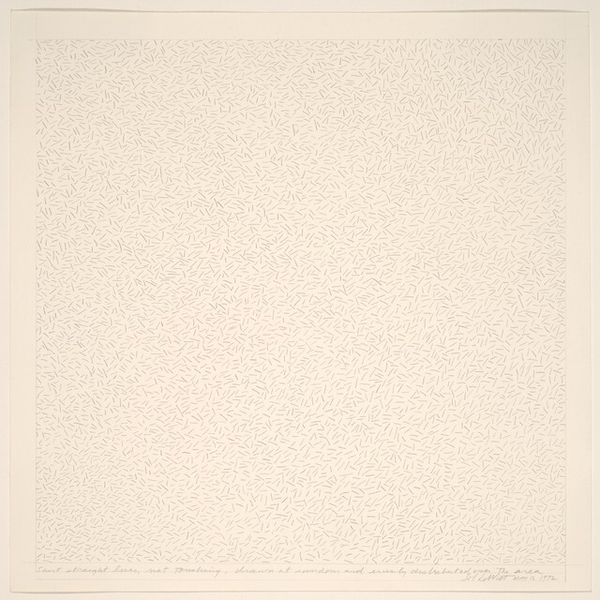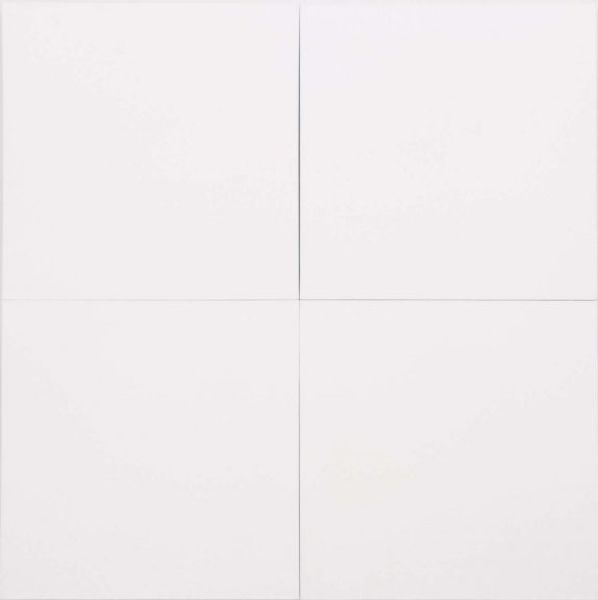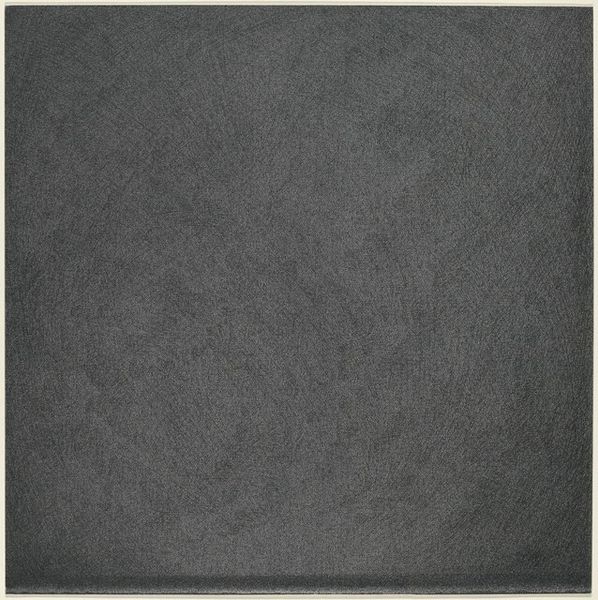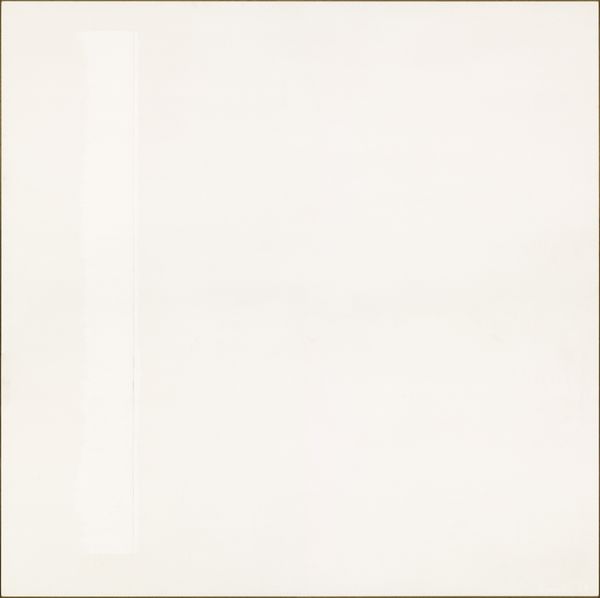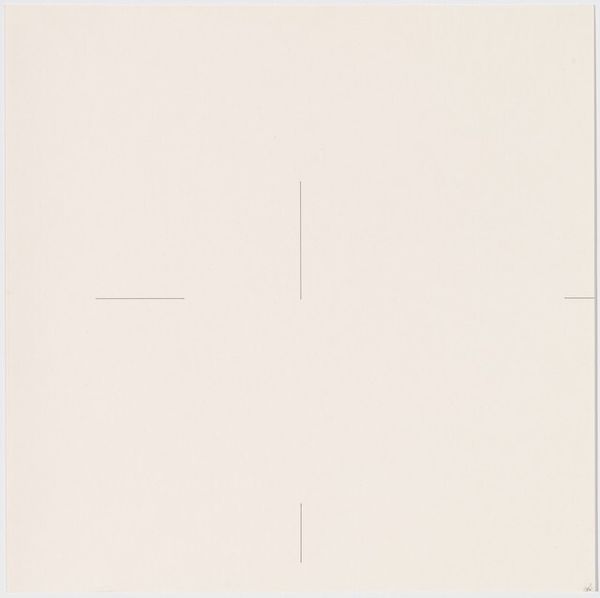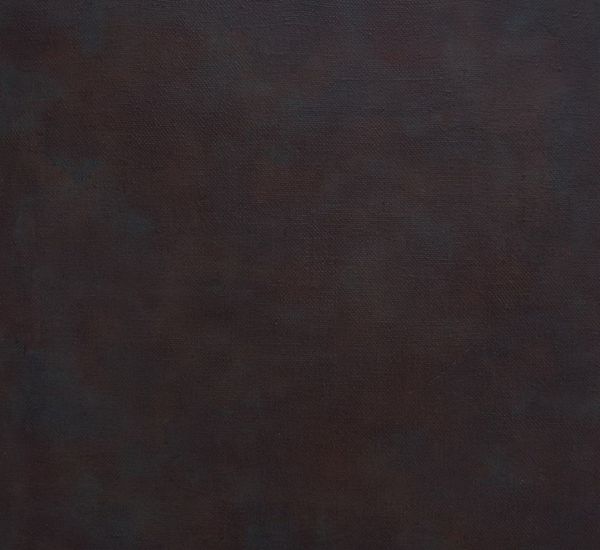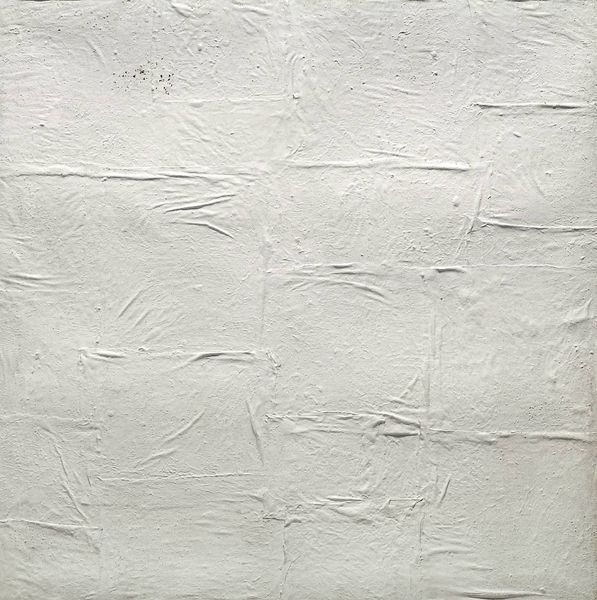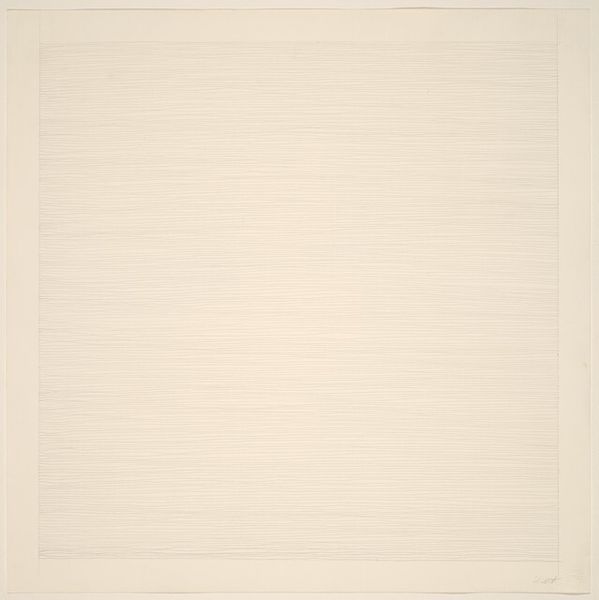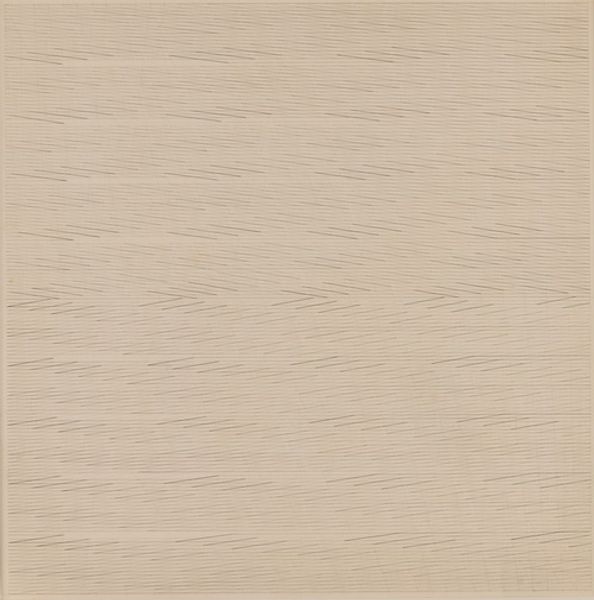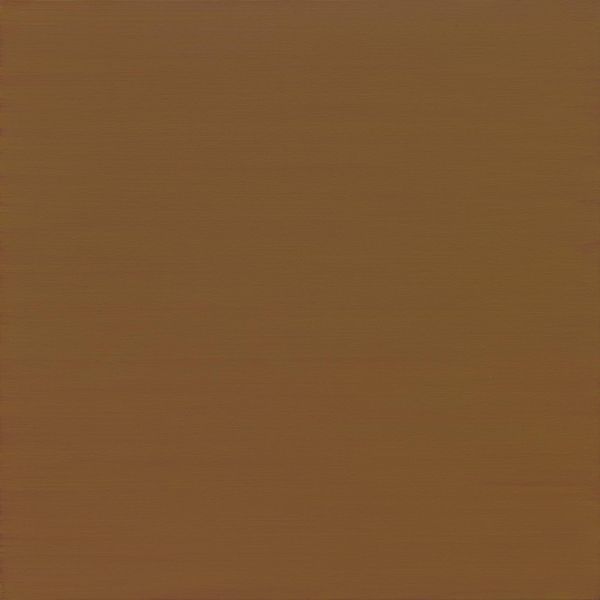
painting, oil-paint
#
abstract-expressionism
#
painting
#
minimalism
#
oil-paint
#
matter-painting
#
abstraction
#
modernism
Dimensions: overall: 179.7 x 179.7 cm (70 3/4 x 70 3/4 in.)
Copyright: National Gallery of Art: CC0 1.0
Editor: This is Robert Ryman's "Untitled" from 1961, an oil painting. It’s… white. Overwhelmingly white. There's some texture, but really, it's just white paint on, I assume, canvas. What do you see in this piece? Curator: What I find fascinating about Ryman is how he strips painting down to its absolute essentials: material, surface, and process. Think about the historical context. This was created amidst Abstract Expressionism's grand gestures and emotional outpourings, yet Ryman takes a radically different path. He focuses on the physicality of the paint itself. Editor: So it’s a reaction against Abstract Expressionism's emotionality? A statement? Curator: Absolutely. It challenges the established norms. Look closely. The visible brushstrokes, the subtle variations in the white pigment, how does this piece implicate the gallery or museum space around it? Editor: I see what you mean. It's almost like the painting is incomplete without the gallery’s white walls adding to its presence. It's an interaction. Curator: Precisely. And that interaction makes us question what constitutes a painting. Is it just the canvas? Or is it the entire experience, including the viewer and the space? Ryman compels us to confront these questions about art’s purpose and presentation. Editor: It makes you think about the institution, the white cube gallery itself, and its influence. Curator: Exactly! It forces us to analyze the relationship between the artwork and the environment. A subversive act, presented serenely. Editor: I see it differently now, no longer “just” white paint, but something that speaks to the systems around it. Curator: Ryman's work serves as a powerful reminder that art exists within – and comments on – a broader socio-cultural landscape.
Comments
No comments
Be the first to comment and join the conversation on the ultimate creative platform.

